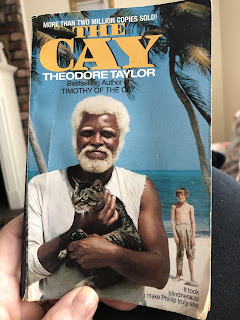This book took me forever to read! But when I finally finished it, I decided to use it for an assignment in one of my summer courses,
Reading From the Head and Heart. This is a lengthy—like the book—post, describing the process of comparing notes about "What We Noticed" while reading the book.
I chose to have a discussion with my friend Lisa who is a prolific reader and a great source of book recommendations for me. Because I’m a painfully slow reader, I don’t like to waste my time with duds, and her suggestions never let me down! Our book talk involved The Goldfinch by Donna Tartt, a very long but satisfyingly, multi-dimensional book that I just recently finished reading. I actually started reading the book in 2015 but picked it up again after purchasing a digital copy of it. Lisa read it and reviewed it again as well, and we are both eager to see the movie when it comes out in September!
Lisa belongs to a book club that meets once a month except in the summer. I explained the Book Head Heart framework to her and described how it is a useful strategy for immersing my students more deeply into their reading. I wondered if she thought it would work to promote discussion in the book club setting with adults, and she agreed it would. She promised to give it a try at their October meeting where she is leading a talk about The Overstory by Richard Powers, which I hope to read next too!
We began by talking about the structure of The Goldfinch, basically reviewing the plot and sharing our favorite and least favorite parts. Not surprisingly however, most of the insightful moments from our conversation took place once we branched off into the Head and Heart components. There is a lot of overlap, but I feel the dialogue below captures two insightful moments. The first is our thinking about why the author chose for certain events to take place, specifically many of the main character’s actions upon his return to New York City. Second, we began to talk about the theme and the character development of the main character, Theo Decker.
Bonnie: So, there were a few things that surprised me about the story. I felt it was too much of a coincidence that when Theo returned to New York he ended up getting engaged to the daughter from the rich family he had lived with briefly after his mother died. Of all the people in the city who he could start a relationship with, why her? So much baggage. I would have thought he would want to start fresh with someone who didn’t remind him of the past.
Lisa: Well, that didn’t bother me so much because it was an easy choice for him, an understandable decision. After all the harrowing experiences he had gone through in Las Vegas, maybe he just needed to settle into something comfortable and return to the familiarity of his past.
Bonnie: I still feel that it was just too convenient for him to … settle for Kitsey. It was also too coincidental that he literally ran into her older brother the first day he was back in the city. But I do understand what you’re saying about his comfort level with the family and how it required little effort on his part to reenter their world.
Lisa: But maybe this was also a way for him to prove something to himself. He felt like an outsider when he was a kid living with the family, and being in a relationship with Kitsey sort of elevated him to their status. He needed to belong somewhere, and it probably gave him solace to be welcomed back into a family that had shown him kindness before and who now needed to share their grief with him.
Bonnie: True, but after all his adventures and the unsettling events in his life, I wanted something better for him. I wanted him to hold out for, or more assertively pursue, the girl he really loved, Pippa. But as I say that, it sounds so pathetic. I guess I’m just a hopeless romantic. Unrequited love is just so sad, especially when all along the book hinted that maybe she had feelings for him as well. Or maybe that was just me, wishing. So, actually they were more like star-crossed lovers, and that’s even sadder to me!
Lisa: Yes, she represented just one more tragedy in his life. When he lost his mother as a child, it was his most important relationship, and he could never have it again. As an adult, he was denied the relationship with the girl he loved and felt most connected to. His whole life was about adapting to these unfortunate, uncontrollable circumstances, and as a character I think he didn’t always rise to the occasion and make the best choices. He had kind of a horrible life.
Bonnie: Well, I agree with his bad choices: the drugs, dishonest business practices, etc., but in the scheme of things, his life could’ve turned out so much worse. I guess I felt more hopeful for him. He kept pressing forward rather than just curling up in a fetal position and letting more horrors unwind! What do you think about Pippa’s final admission that she loved him too but didn’t feel it was healthy for two damaged people be together? I can really identify with that!
Lisa: I’m not sure, but at least the ending of the story leaves an opening that they may reconnect. Although it never said, I didn’t get the feeling he was going to end up with Kitsey. What do you think the moral of the story is?
Bonnie: There are probably many themes in the story: how humans acclimate to loss and change in their lives; beauty is in the eye of the beholder; the responsibility we have to each other as humans and the bonds we develop even under the worst of circumstances.
Lisa: True, and the painting was a metaphor for how beauty impacts people’s lives in positive and negative ways. It provided a sense of solace for Theo after the explosion, and yet it also represented an ‘albatross around his neck’. He clung to it despite the danger it brought into his life. The contradiction kind of mirrors the different sides of his personality.
Bonnie: It’s very ironic that he discovers so late in the story that he didn’t actually even have the painting. It had been creating so much stress in his life, and finally it ultimately causes him to kill a man. The thing he cherished the most wasn’t even a positive influence anymore! And Boris, who he considered to be his oldest and dearest friend, turned out to be such a buffoon.
Lisa: So, what have we learned from Theo’s story? Is there a positive life lesson to be gleaned from the book? Or is the message truly as depressing as life is just a random string of events?
Bonnie: I don’t know but I kind of liked how the book ended with some unanswered questions, open to different interpretations. I didn’t feel like it was setting up for a cheesy sort of sequel or anything, but I definitely appreciated the author allowing for readers to draw their own conclusions about the random tragedies in life and how art has played a role in helping humans cope.
What I Noticed:
My big take away from this exercise is that these types of exchanges whether between colleagues or students are so beneficial because they are unpredictable. They keep you on your toes and push you to elaborate your thoughts and feelings. You don’t know what direction the other person’s comments will take so you have to stay engaged in listening and thinking of a reply that makes sense. In addition to exploring deeper thinking intellectually and emotionally, it’s just good practice for the give-and-take of sharing ideas and effectively communicating in an academic setting. It requires students to practice agreeing and disagreeing with their peers in positive, productive ways. If it helps students to become more proficient in this regard, then it is definitely a worthwhile activity.
Talking about The Goldfinch with my friend also prompted me to do some deeper thinking on my own. After our discussion, I read some positive and negative book reviews for the first time. I agreed with one reviewer’s statement that this is a book people either love or hate! Many of the comments in the negative reviews didn’t really surprise me, but the intensity of the negativity on the part of the critics did. I think it was because they were annoyed that a book they didn’t appreciate had received the Pulitzer Prize!
For students, I think it is a good idea to provide them with sentence frames for having polite, productive discussions, especially when we are asking them to dig deep into their feelings about certain topics. They need plenty of chances to use academic language with each other (because most certainly don’t have any problem talking socially!) and to practice moving a discussion forward without getting hung up on disagreements. Some examples I have used are: “I hear what you’re saying, and I want to add these ideas … Is this what you meant when you said …? Maybe you’re right, but I was thinking a little differently … What do you think about the character’s actions/thoughts/dialogue? I disagree with what you said because …”










